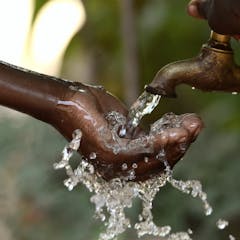
Articles on pollutants
Displaying all articles

Dust and traffic pollution add to the health hazard posed by some cooking fuels.

Herbicides and pesticides wash downriver from farms and towns – and some of these chemicals are taken up by oysters.

The production, use and end-of-life of clothing all have an impact on our health. But greater ecological awareness could turn the tide.

New restrictions on PFAS and other potentially hazardous chemicals in Australia present an opportunity for industry to develop alternatives for new, safe and clean products.

Human activities can affect plants and have consequences for the human populations that consume them.

Every household is more likely than not to have dusts containing PFAS chemicals at low concentrations. But how worried should we be about the risks to our personal health?

Technology will be a key part of solving the global water scarcity crisis.

From persistent chemicals to exhaust particulate matter, snow accumulates highly toxic pollutants. Regulations are needed to address the impacts on water supplies and the food chain.

UV absorbents and industrial antioxidants are used in many household goods to protect them from UV radiation. They can have an adverse impact on ecosystems.

We need to advance our understanding of the effects of microplastics on aquatic ecosystems, especially on small animals at the base of food webs that might be ingesting more of these particles.

Humanity’s biggest challenges are not technical, but social, economic, political and behavioural. Effective actions are still possible to stabilise the climate and the planet, but must be taken now.

There have been instances of heavy metals pollution in Nigeria that led to public health crisis.

Pollutants from industrial and domestic sources in the Lagos lagoon represent a cocktail of environmental contaminants.

As lockdowns have came into effect around the world, air pollution has plummeted.

Pollutants like nitrogen dioxide are a silent killer, but everyone isn’t equally at risk.

Images of wildfires are powerful, but can make climate catastrophe seem like something spectacular and distant. So some artists are focusing on the plants and bugs in our immediate surroundings.

Episodes of reported PFAS contamination are never far from the news. Here’s a run-down of what PFAS is, and why we have little reason to worry about its potential effects on our health.

The number of substances emitted into the atmosphere is immense and growing, but some are particularly harmful to health and are subject to increased monitoring.

When present in the lowest atmospheric layer, ozone becomes a concern for human and plant health.
